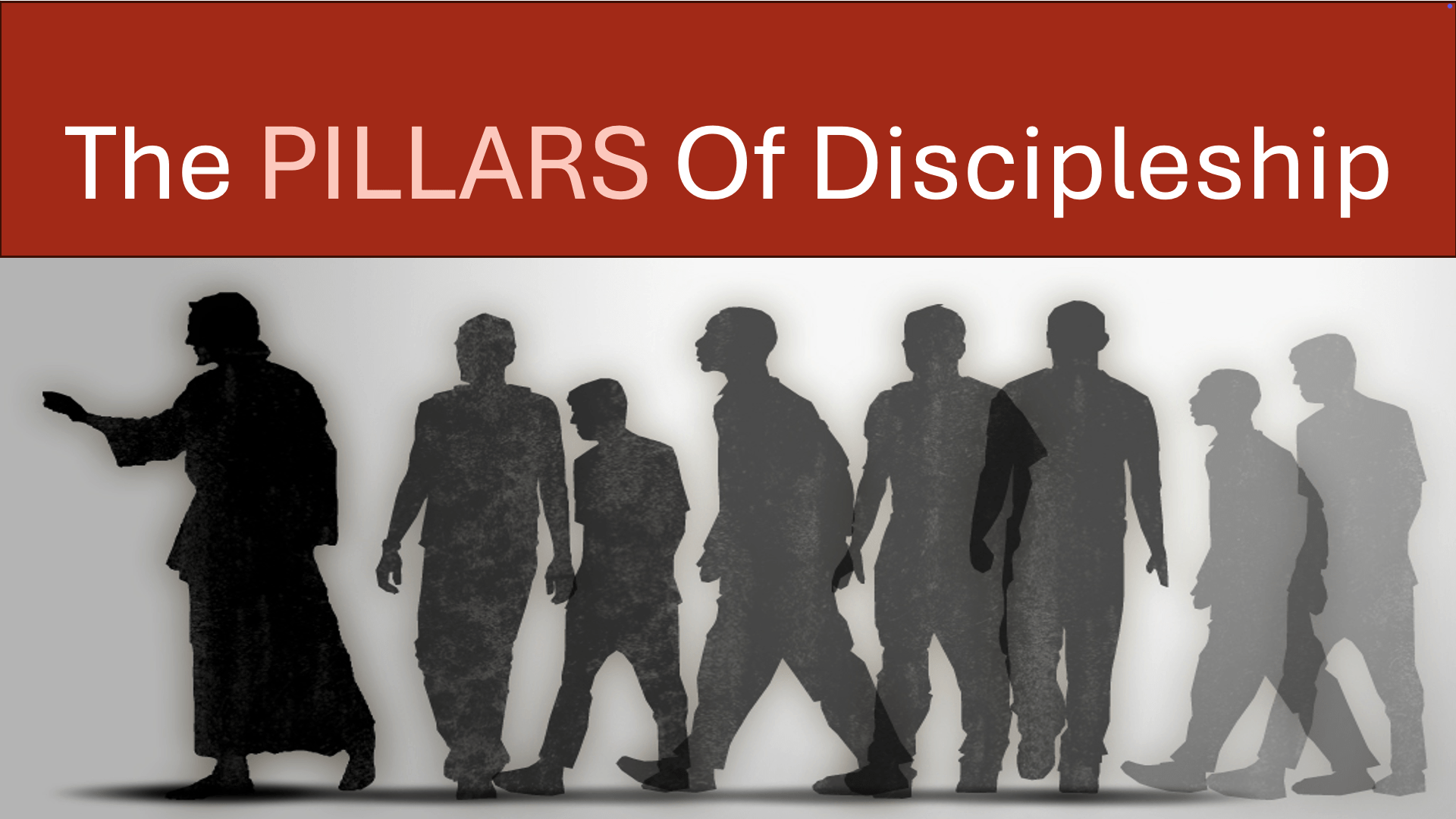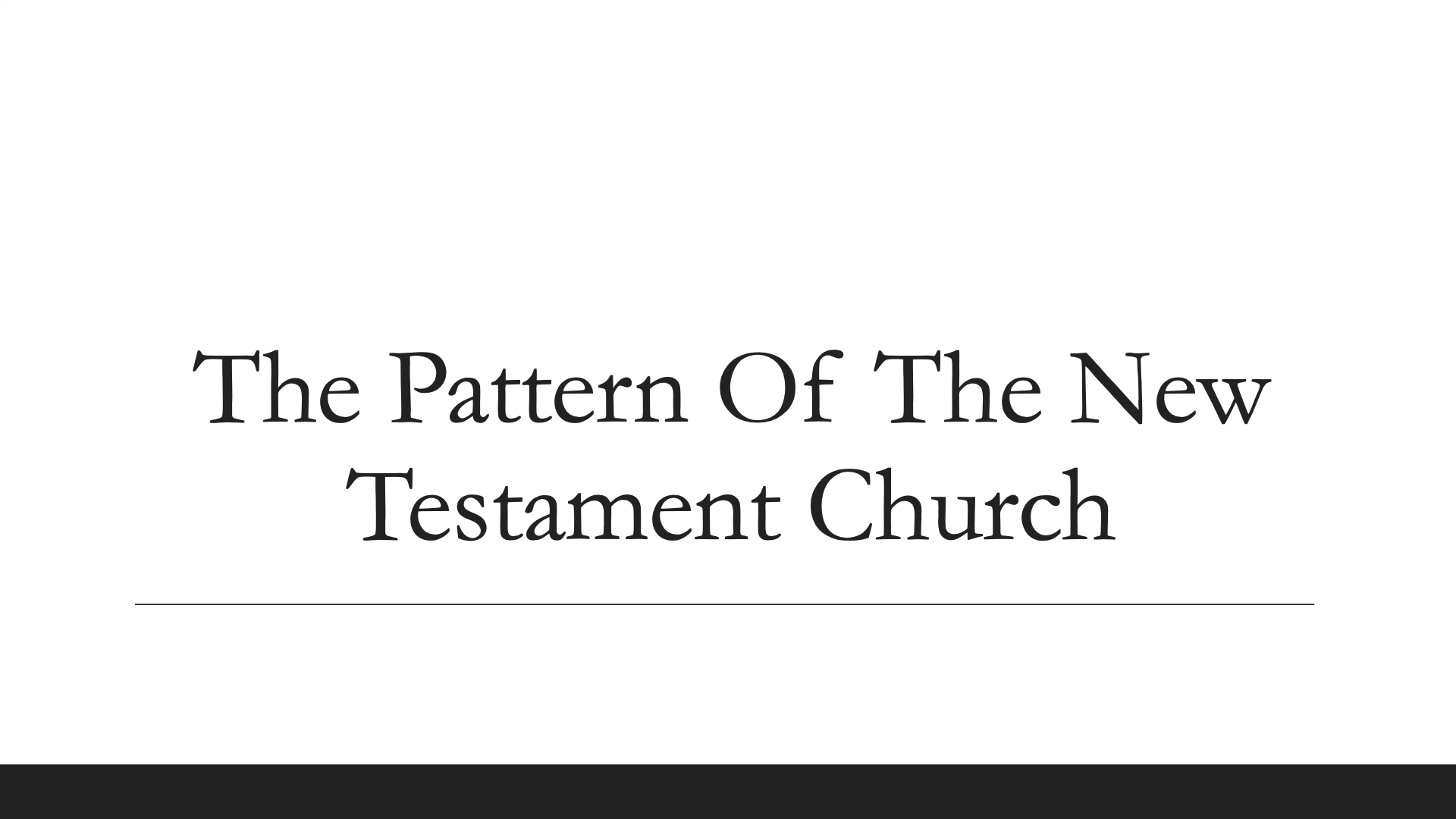Downloadable Files:
Text:
The New Testament Church
The Plurality Of The New Testament Church
The Bible is clear that there is only one “universal” church Jesus built, composed of all the saved (Matthew 16:18; Acts 20:28; Ephesians 4:4). These are the ones who have obeyed the gospel of Christ and live in obedience to King Jesus. However, there is also a sense in which you read about people being part of “churches” (sometimes called “local” churches).
Romans 16:3-5, 14-16
Notice that other “churches of Christ” sent greetings to the Christians in Rome. Then, even within Rome, there seem to have been multiple churches throughout the city (vv. 3-5, 14-15). Regardless, there is a clear sense in which the term “church” can be used in a plural sense in the Bible (Acts 15:41; 16:4-5; 1 Corinthians 7:17; 11:16; 14:33-34; 16:1; 16:19; 2 Corinthians 8:1, 18-19, 23-24; 11:8, 28; 12:13; Galatians 1:2, 22; 1 Thessalonians 2:14; 2 Thessalonians 1:4; Revelation 1:4, 11, 20; 2:7, 11, 17, 23, 29; 3:6, 13, 22; 22:16). These various churches can be described as “local” churches. God desires these churches to assemble and work in various local communities throughout the world and be composed of people who are part of the one universal church Jesus built. While this universal church does not have a collective earthly organizational/leadership structure (e.g. Pope, council, president), the local church does have an organizational/leadership structure (Acts 14:23). While the universal church does not have a collective earthly responsibility to assemble in one place, the local church does have that responsibility (1 Corinthians 14:23). While the universal church does not have a collective earthly work it pools its resources to accomplish, the local church does have a treasury of money and the responsibility to do work (Philippians 4:15-17). Therefore, the local church is an important piece in God’s plan for His people!
1 Corinthians 1:10-13
Some may mistake the concept of local churches in the Bible for the modern concept of denominationalism or religious division in which each local church is a different expression of what “church” is (e.g. different beliefs, teachings, and practices). However, that is not what the concept of the local church is according to God! This passage demonstrates the concept of how Christians within this local church were to have no divisions among them and be perfectly united in the same understanding and conviction. Still, this does not just mean that a particular local church should be united in their beliefs, practices, and teachings, while divided from other local churches who believe, practice, and teach things differently (Philippians 1:27; Ephesians 4:1-6). Instead, this church was being taught the same as what was taught and expected of the other churches (1 Corinthians 4:17; 7:17; 14:33-35; 16:1). In fact, the New Testament outlines a pattern of beliefs, practices, and teachings God has delivered for all His people and churches (2 Thessalonians 2:13-15; 2 Timothy 1:13-14).
Acts 18:1-11
This passage is a helpful study in how a local church develops (1 Corinthians 1:2 references the church of God at Corinth). Notice that the gospel of Jesus Christ was brought to the city of Corinth by those who were Christians. As the gospel was taught in Corinth, some people believed and were baptized in obedience to King Jesus (Acts 2:38). These were added to the one universal church at this time (Acts 2:47). Paul stayed with these new Christians and continued helping them grow and spreading the gospel for a year and a half. Later, Paul would write letters to them, continuing to instruct, rebuke, and encourage them so they would please God.
Acts 9:26-28
While the previous passage helps to see the beginning and development of the church in Corinth on a church level, this passage helps to see how a Christian joins a local church. Saul (Paul) had become a Christian and was added to the one universal church (Acts 9:1-19). Now, Paul had come to Jerusalem and sought to join himself to the church there. Therefore, we can see that it is part of God’s plan for Christians (whenever possible) to join themselves to other Christians in their local geographic areas. The aspects of leadership, work, assembling, and fellowship make being part of a local church critical. Then, notice that a person’s membership with a local church begins and continues by mutual agreement between that individual and the rest of the church membership. The individual should only attempt to join a church that believes, practices, and teaches what agrees with Scripture (Ephesians 5:6-14). The church should only accept members who are living in fellowship with God (1 John 1:5-7).
1 Peter 5:1-4
The picture of local churches in the New Testament is such that each church is autonomous (self-governing). That is, God did not design a denomination with an earthly hierarchical structure of people to dictate what every church believes, practices, and teaches. Jesus is the only Head and Chief Shepherd (Colossians 1:18). Then, each local church is designed with its own leadership structure (as seen in elders/shepherds among the flock). Therefore, any larger structure of authority over the local church is foreign to the New Testament Scriptures (e.g. denominational structures, multi-campus churches, church conferences, etc.).
Conclusion
All of Jesus’s saved people are part of the one church built by Jesus. However, Jesus has also designed it so that His followers join themselves with other Christians in local geographic areas as part of local churches. These churches operate independently of other local churches in trying to follow Jesus in their local communities and have been given a pattern to follow in areas related to their mission, teaching, assemblies, worship, leadership, work, and fellowship.



